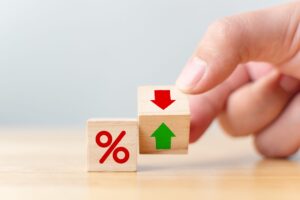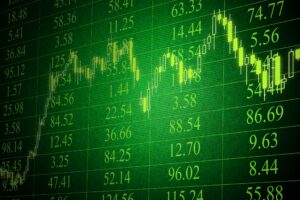Funded Forex vs Funded Futures: Which Prop Path Is Right for You?

Introduction: Two Markets, Two Mindsets, One Big Decision
Stepping into the world of prop trading means more than choosing a firm—it means choosing a lane. And for many aspiring traders, that decision boils down to one pivotal question: funded forex or funded futures? Both paths offer access to firm capital, performance-based payouts, and scalable opportunity. But they operate in entirely different ecosystems. Forex is fast, fluid, and globally accessible. Futures are structured, institutional, and rooted in exchanges. While prop firms support both markets, the skills, psychology, and trading conditions they demand are not interchangeable. If you’re trying to decide which route to pursue—or wondering if you chose the right one—this article will give you clarity. We’ll break down the nuances of each, explore how prop firms treat them, and help you match your trading personality with the market that suits you best. Because in the world of prop trading, alignment is everything—and choosing the right instrument could be the key to your long-term success.
The Forex Advantage: Accessibility, Flexibility, and Global Liquidity
Forex is where many traders begin their journey—and for good reason. It’s the largest financial market in the world, open 24 hours a day, five days a week. Currency pairs like EUR/USD and GBP/JPY provide endless opportunities to enter and exit with precision. For those living in countries where local markets are underdeveloped or restricted, forex offers a lifeline. It’s decentralized, meaning you’re not trading through a single exchange. And with most prop firms, the requirements to get funded in forex are designed to be beginner-friendly and globally inclusive.
Forex appeals to traders who crave flexibility. Whether you’re a part-time scalper, an intraday trend-follower, or a swing trader, the forex market accommodates all styles. Spread-based execution, low entry capital, and a high degree of liquidity make it ideal for fast-paced, strategic decision-making. Prop firms offering funded forex accounts typically assess traders based on drawdown control, consistency, and daily performance—not just raw profits. That makes it a fantastic proving ground for discipline over time.
The Futures Edge: Precision, Volume, and Institutional Structure
While forex dominates in scale, futures trading wins on structure. These are standardized contracts traded on regulated exchanges like the CME, allowing for full transparency in pricing, order flow, and execution. Prop firms that offer funded futures accounts are often stricter, more data-driven, and aligned with institutional standards. Futures appeal to traders who value precision, clean chart behavior, and measurable volume.
Futures instruments—such as the E-mini S&P 500 (ES), crude oil (CL), or treasury notes (ZN)—tend to follow tighter patterns, making them easier to analyze with tools like volume profile or order flow. These tools are unavailable or unreliable in forex. Additionally, the futures market offers lower spreads and higher leverage, though exchange fees and commission structures are more complex. Many futures prop firms use evaluation phases focused on consistency, risk-per-trade, and holding discipline. Traders who succeed in this environment often come from data-heavy backgrounds or are particularly meticulous about market mechanics.
How Prop Firms Evaluate Forex vs Futures Traders
While the end goal is the same—get funded, stay funded, earn profit—prop firms treat forex and futures traders differently in their challenge structures. Forex prop firms tend to emphasize consistency and emotional control over rapid growth. Their challenges might include daily drawdown limits, profit targets, and minimum trading days to ensure the trader isn’t simply lucky.
Futures prop firms, by contrast, often enforce stricter intraday drawdown rules, position sizing limits, and time-based restrictions. This reflects the exchange-based nature of the futures market. Evaluation windows may be shorter, but the expectations are sharper. Futures traders are expected to demonstrate clean execution, capital preservation, and strong risk-reward ratios. Forex challenges, while still demanding, allow more room for stylistic variation and learning curves.
If you’re choosing between the two, ask yourself what kind of challenge environment will help you thrive—not just what looks easier on paper.
Lifestyle and Time Zone Considerations
Trading forex and futures also means choosing a lifestyle. Forex markets run nearly around the clock, from the Sydney open on Sunday evening to the New York close on Friday. This allows traders in any time zone to find active hours that work for them. For those balancing jobs, family, or other responsibilities, this flexibility is invaluable.
Futures, however, operate on a more rigid schedule. While there are extended trading hours, most liquidity and movement happen during the US session. If you’re based in Asia or Europe, this might mean late nights or early mornings. That’s something to consider if longevity and routine matter to you. Prop firms offering both paths typically recommend traders choose a market that aligns with their lifestyle—not just their trading strategy. Fatigue, inconsistency, and burnout are real risks if your market activity conflicts with your natural rhythm. It’s not just about where you can trade—it’s about where you can thrive.
Costs, Platforms, and Tools: What You Need to Succeed
The cost of trading through a prop firm also varies between forex and futures. Forex is typically cheaper upfront. Most forex-funded accounts use platforms like MetaTrader or cTrader, which are free or low-cost. Spreads are built into the pricing model, and execution is relatively seamless. Many prop firms even offer copy trading or web-based dashboards for convenience.
Futures, on the other hand, often require subscriptions to trading platforms like NinjaTrader or Rithmic and incur data feed fees, exchange costs, and commissions. While these costs are often small, they can add up and may affect short-term profitability. However, the benefit is access to powerful tools like depth-of-market (DOM), footprint charts, and tick-level data that make precision trading easier. If you’re analytical and enjoy high-level tools, futures may be worth the extra learning curve. Just be sure to calculate the full cost before committing to a funded account.
Which Trader Personality Fits Each Market Best?
Choosing between funded forex and funded futures ultimately comes down to who you are as a trader. Are you fast-moving, globally curious, and emotionally adaptable? Forex may suit your temperament and lifestyle. Do you prefer structure, analysis, and cleaner technical setups? Futures might be your natural fit. Prop firms recognize these differences and tailor their platforms and expectations accordingly.
There’s no wrong answer—only the wrong fit. Many traders test both markets before deciding. Some start in forex, gain discipline, and move into futures. Others build consistency in futures and expand into forex to take advantage of 24/5 flexibility. Prop trading is less about choosing a path and more about building the habits and insights that make any path profitable. The key is to start where you’ll learn fastest, perform best, and grow sustainably.
Conclusion: Two Paths, One Goal—Funded Freedom
Whether you choose funded forex or funded futures, the destination is the same: access to capital, performance-based scaling, and the freedom to trade professionally without risking your own savings. Prop firms are not asking for perfection—they’re asking for consistency, self-awareness, and growth. Forex offers the accessibility and flexibility many new traders need. Futures provide the structure and precision that professionals crave. The best part? You can try both. The key is finding the environment where your edge, discipline, and personality converge. When you do, a funded account becomes more than just a milestone—it becomes the start of a trading career that fits your life, your skills, and your long-term vision.







